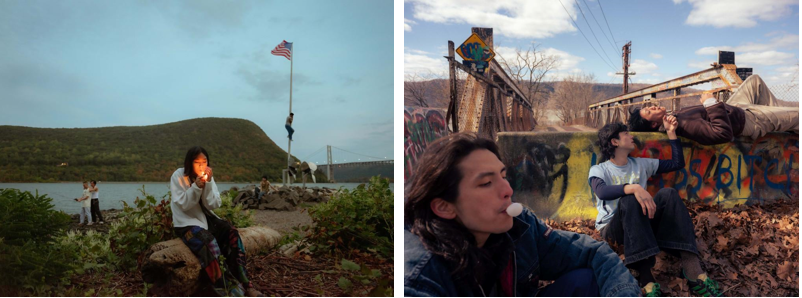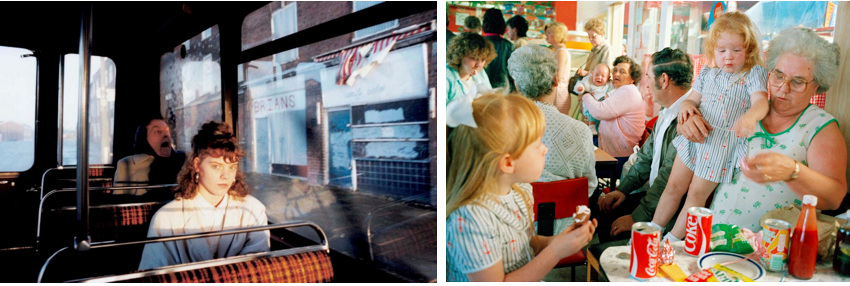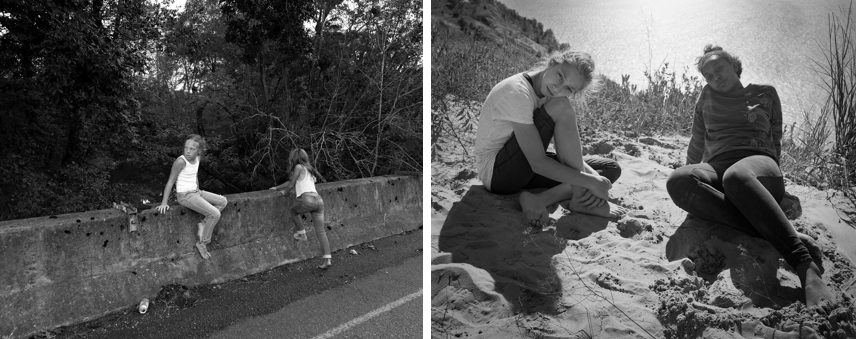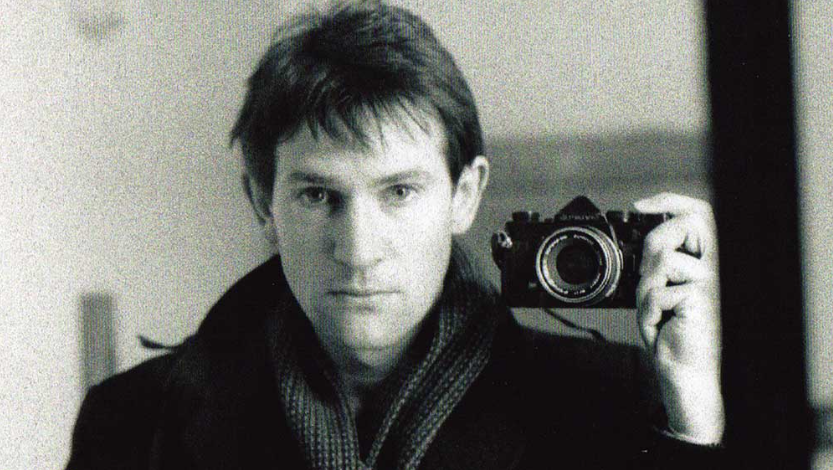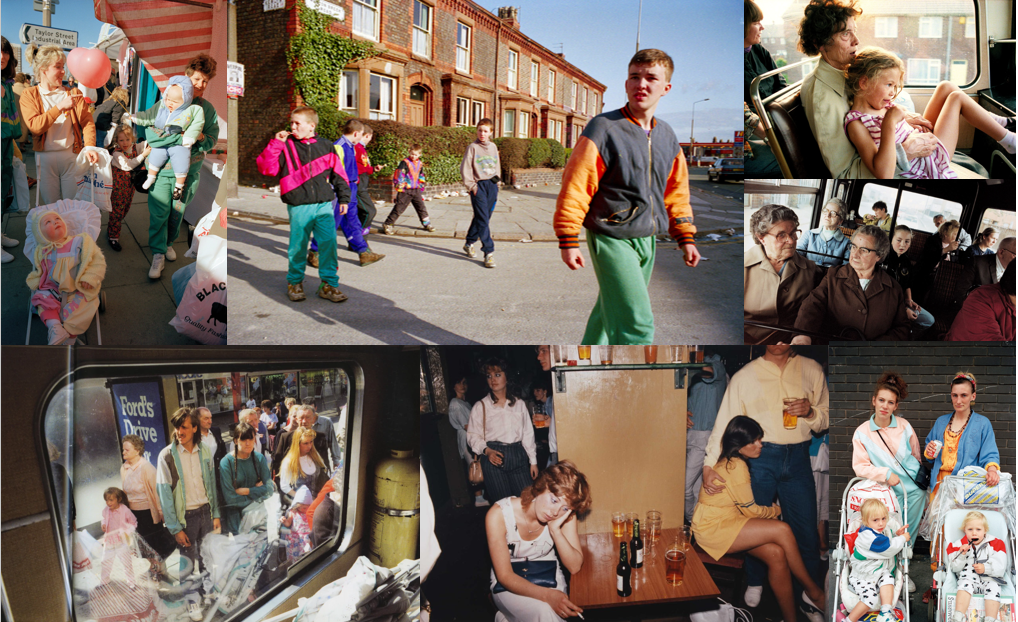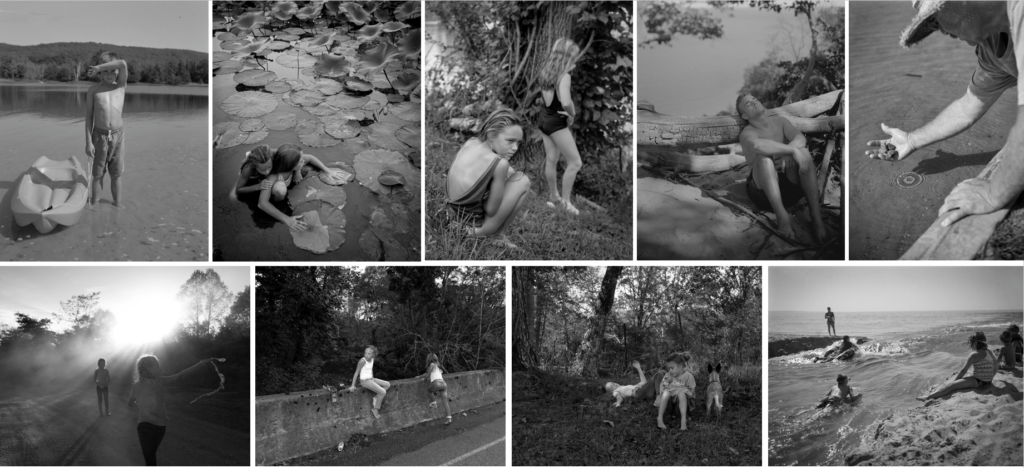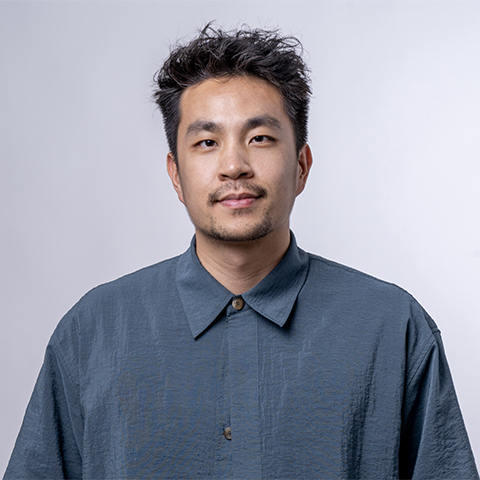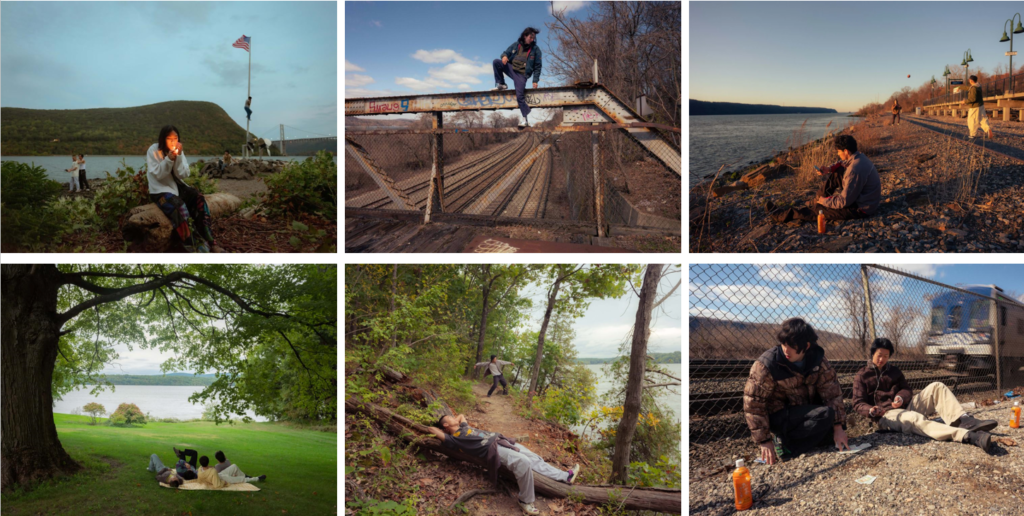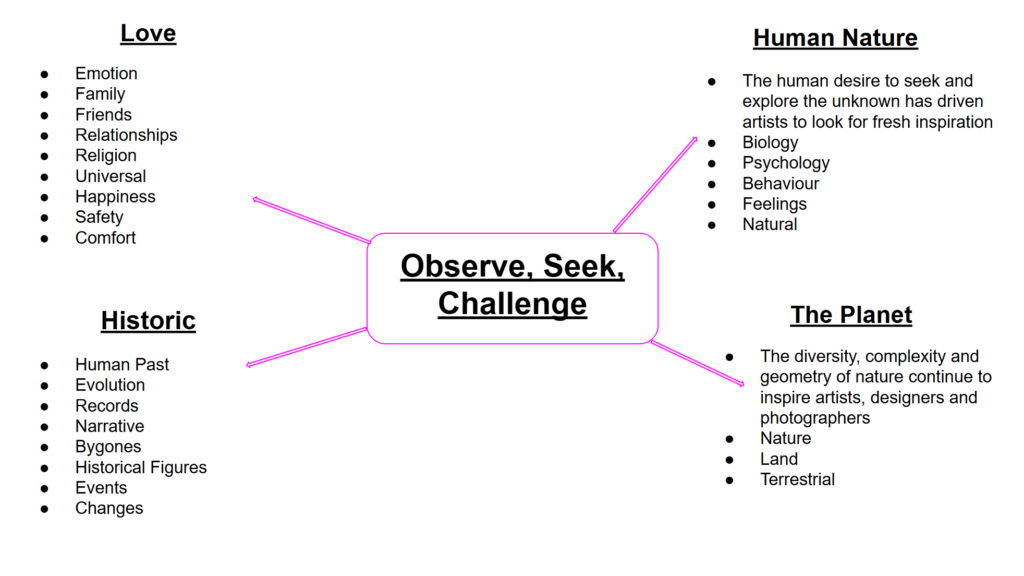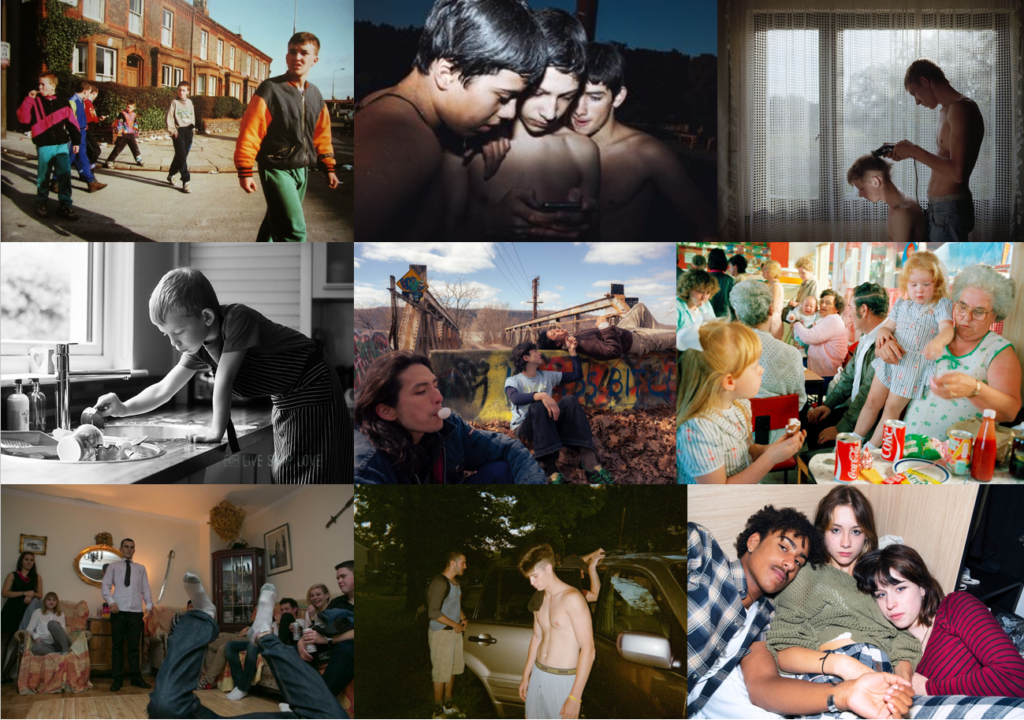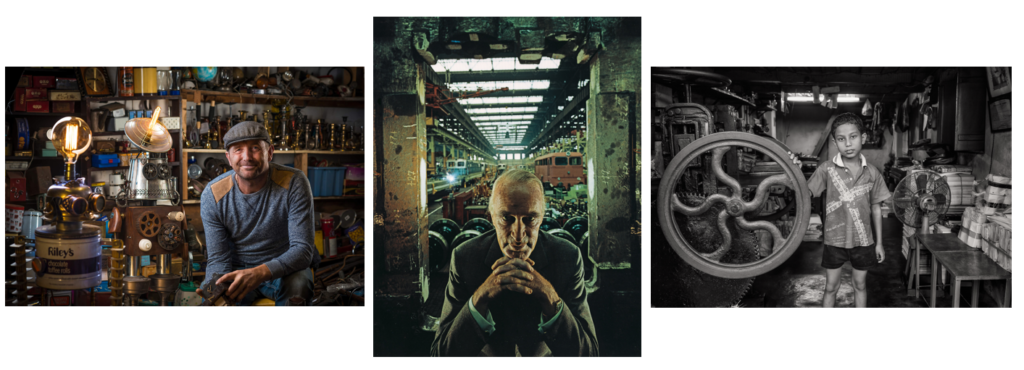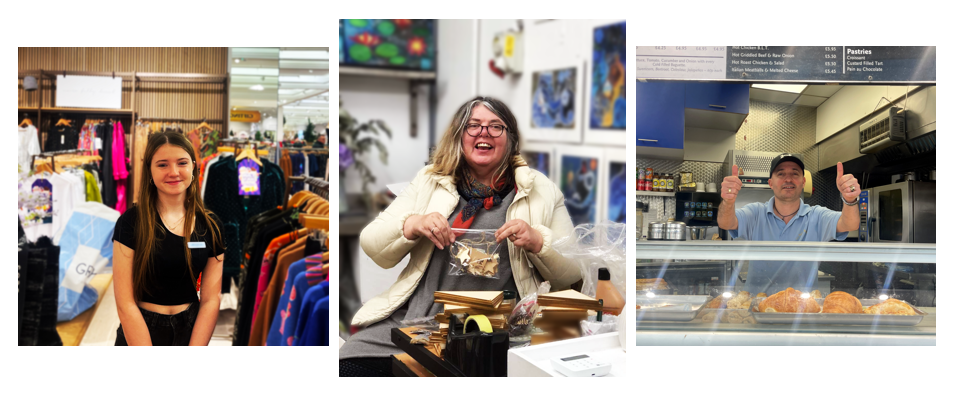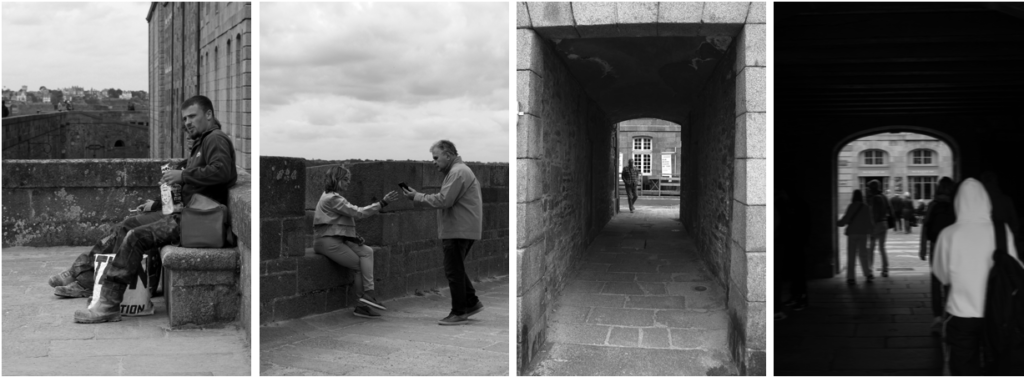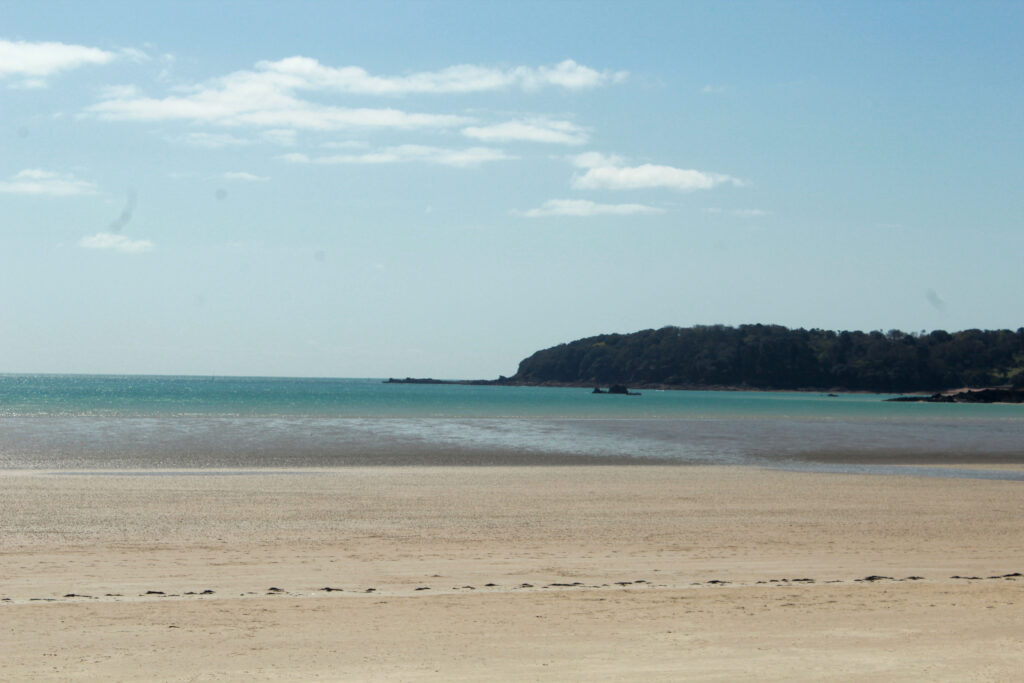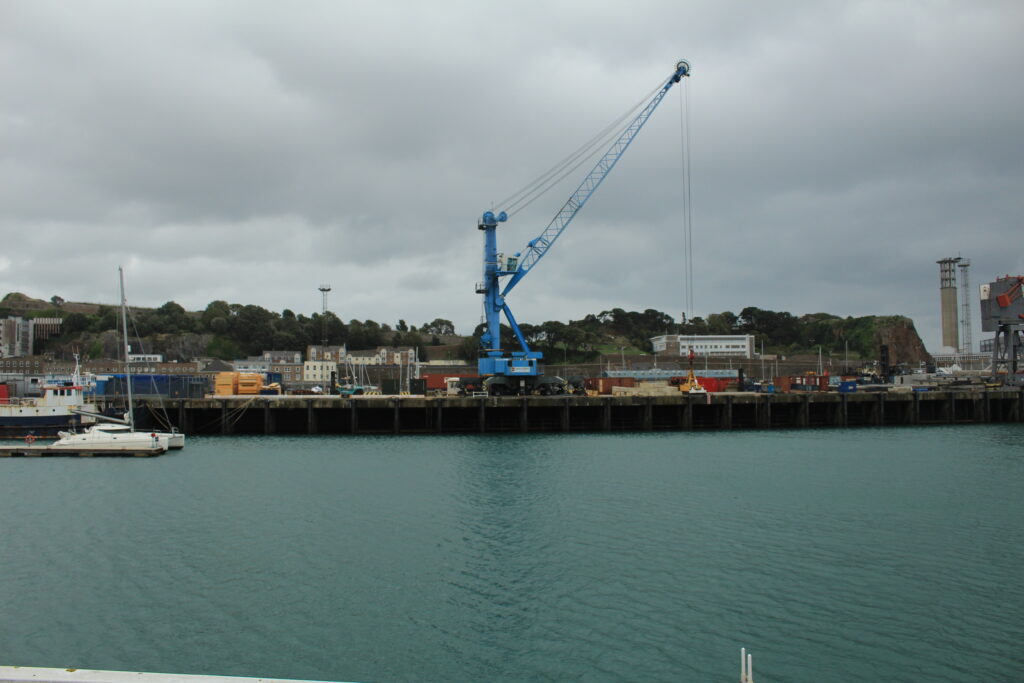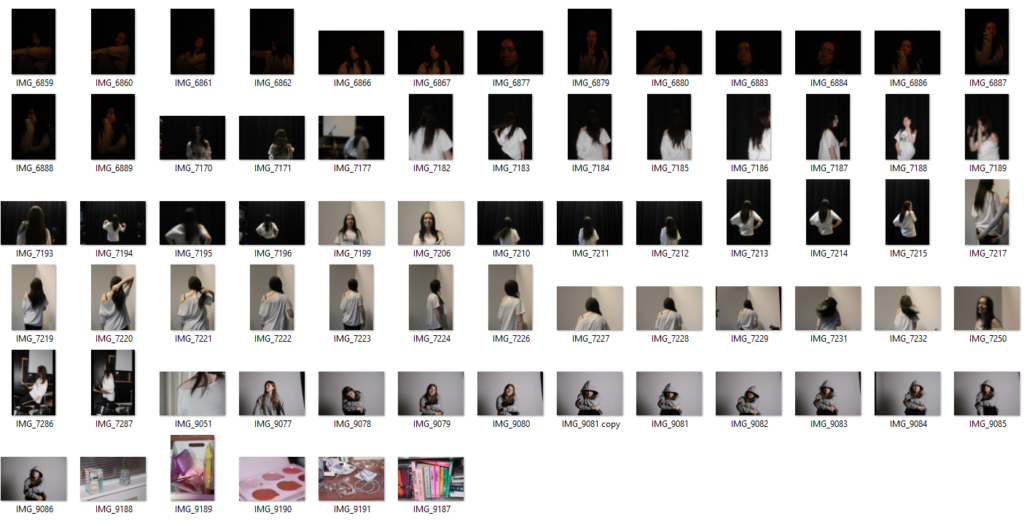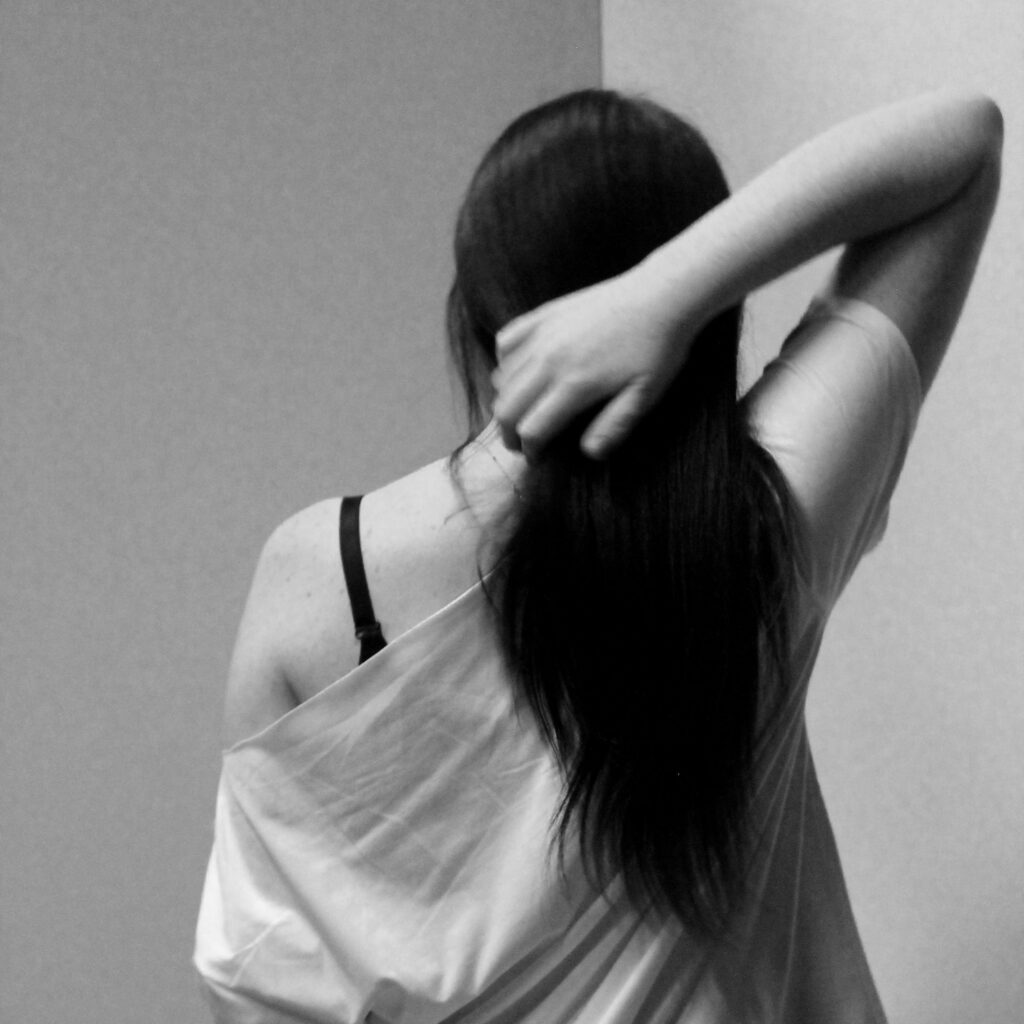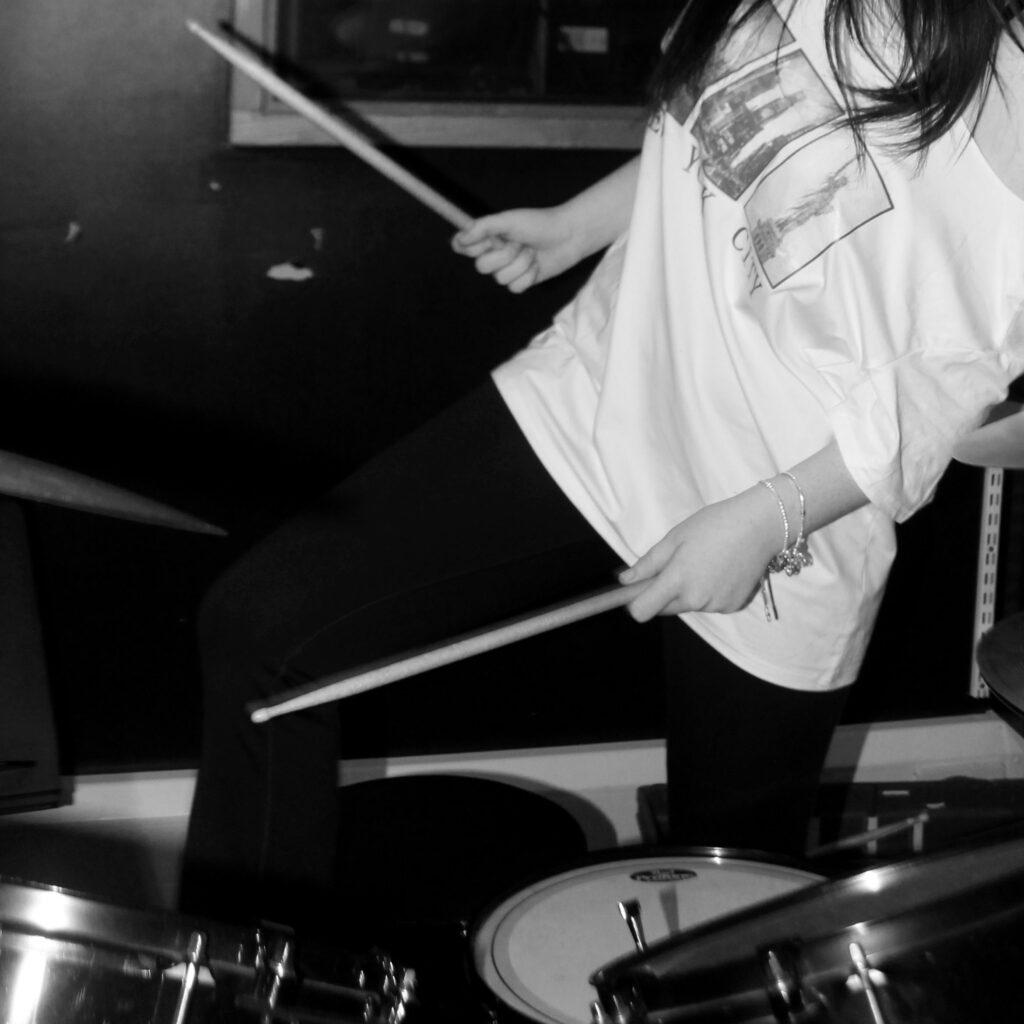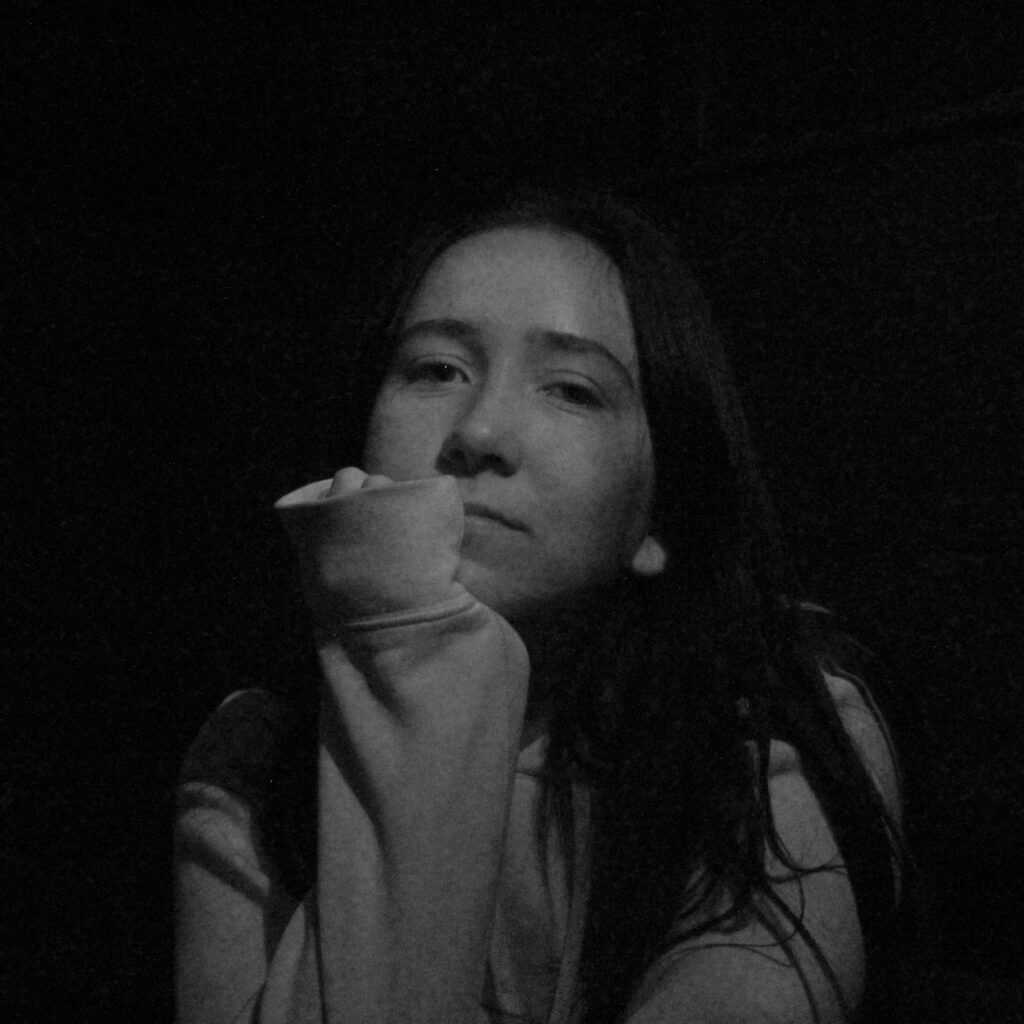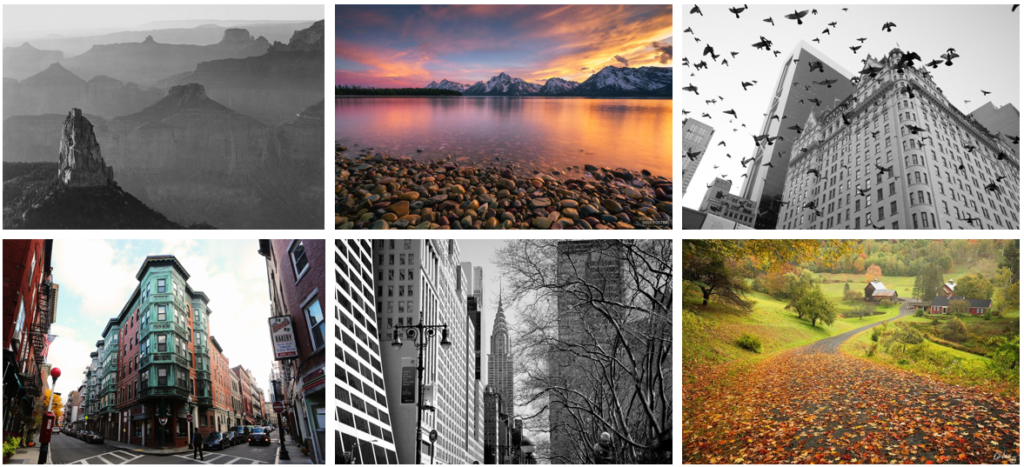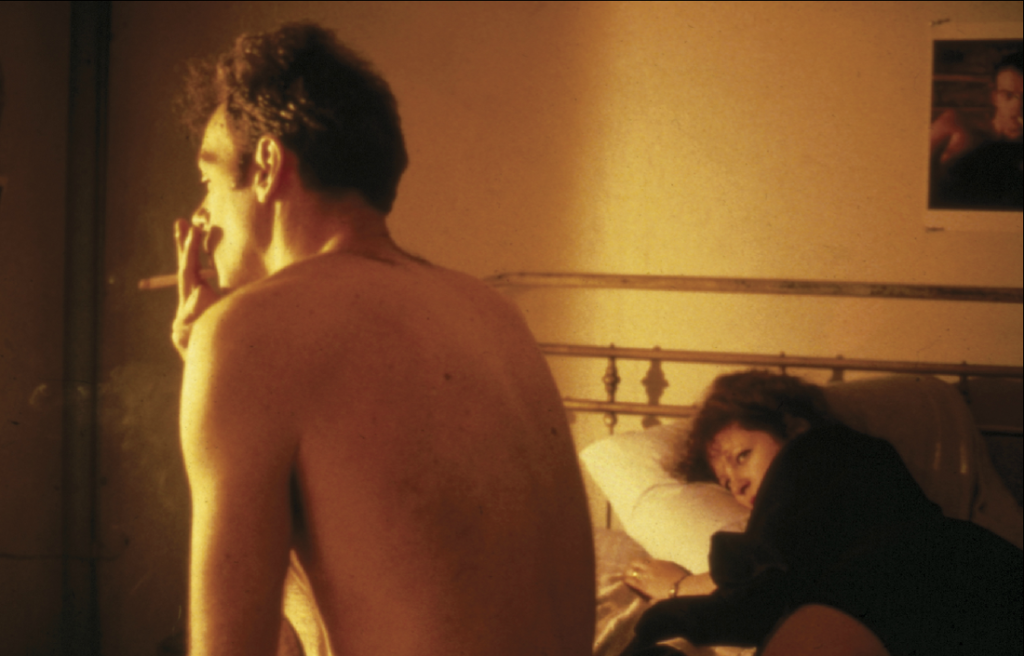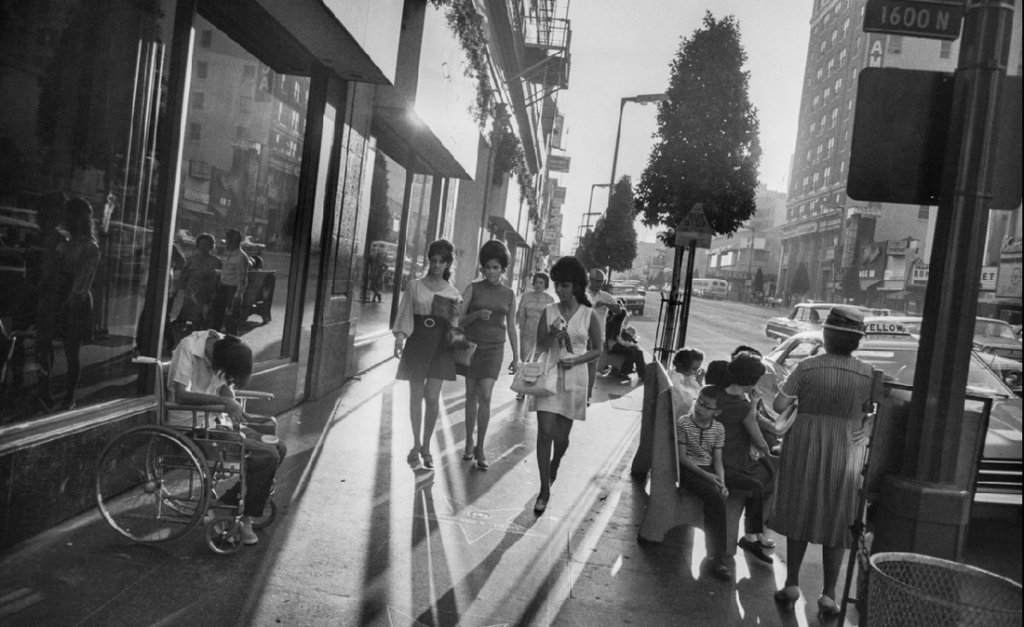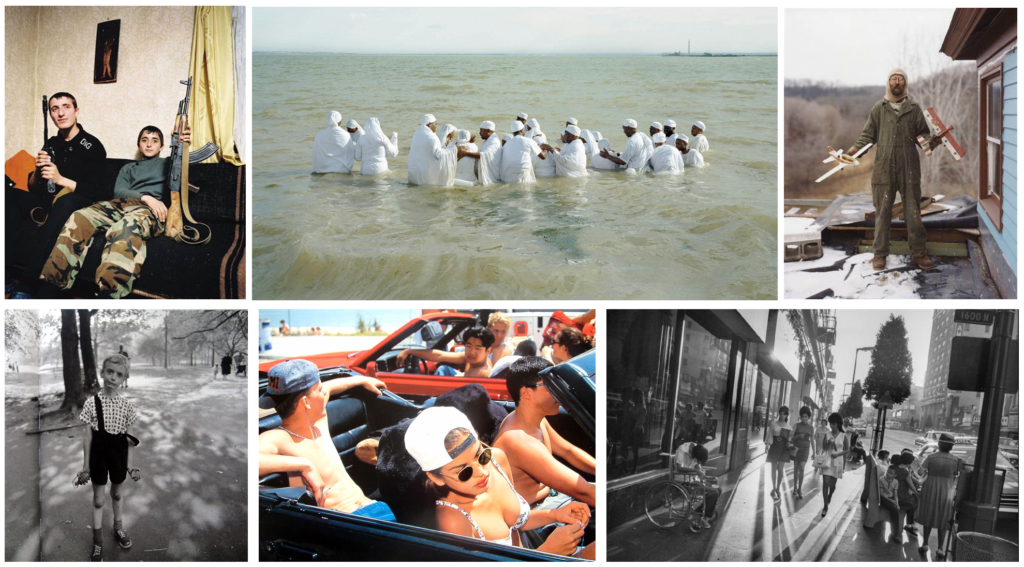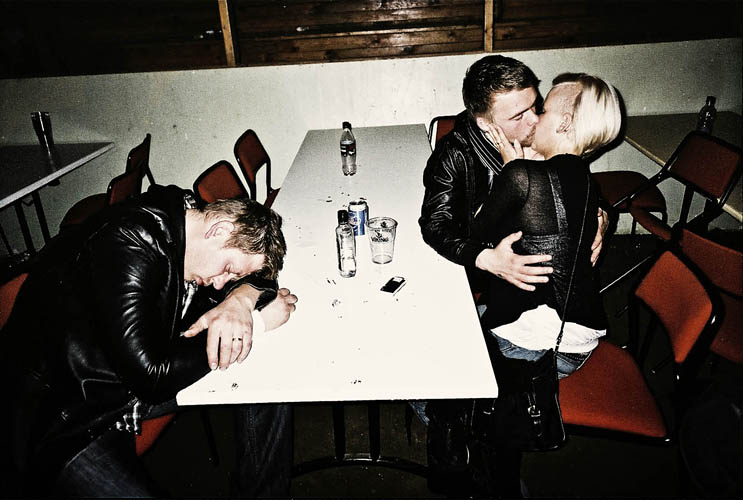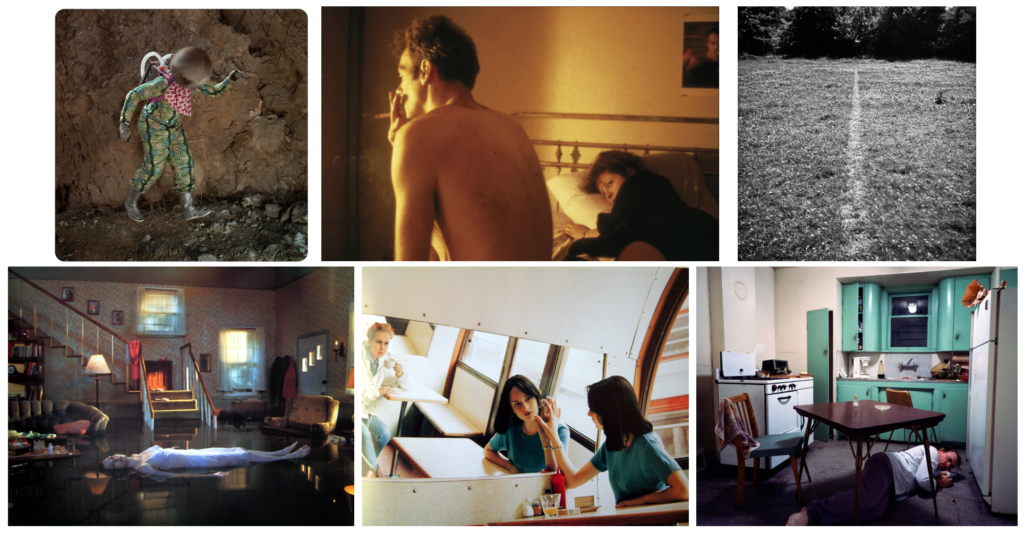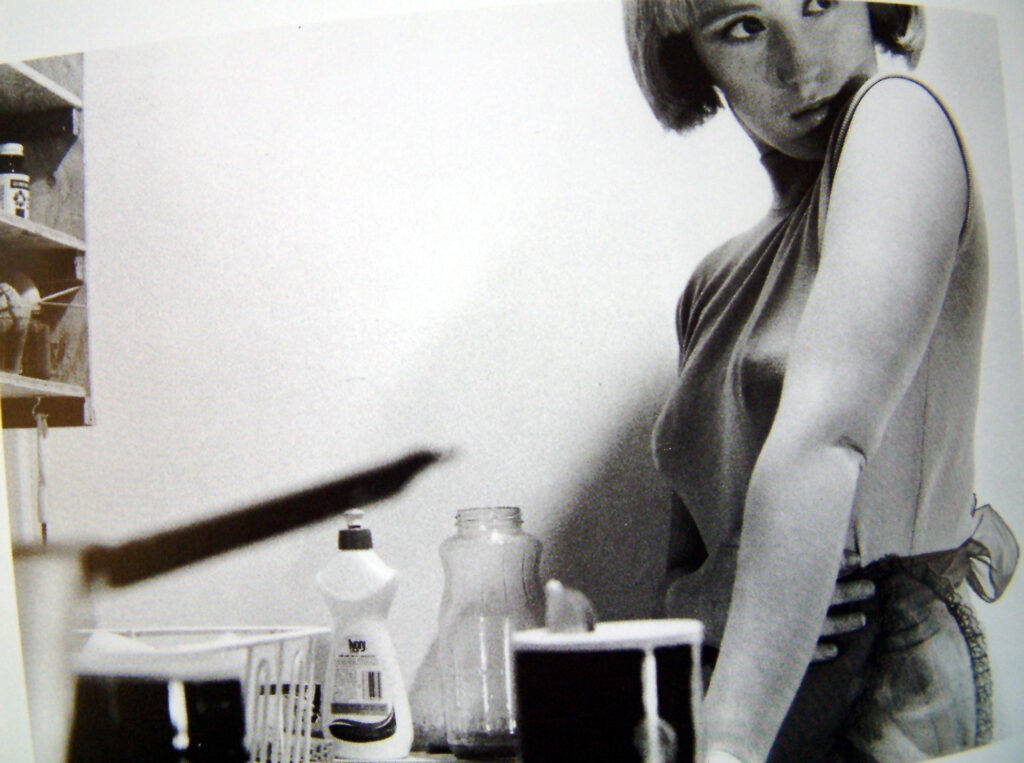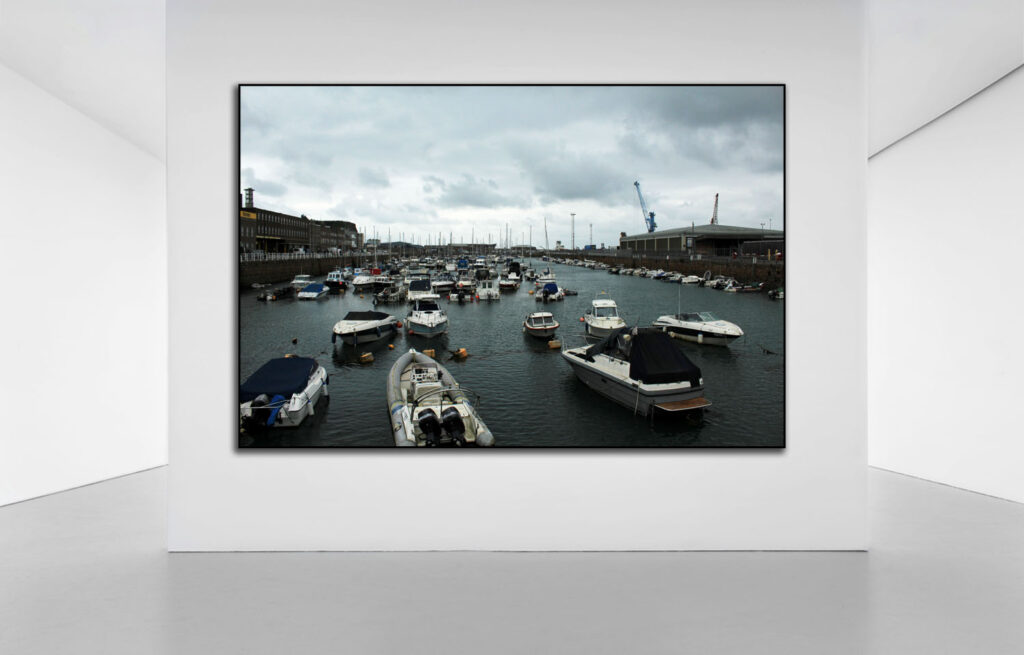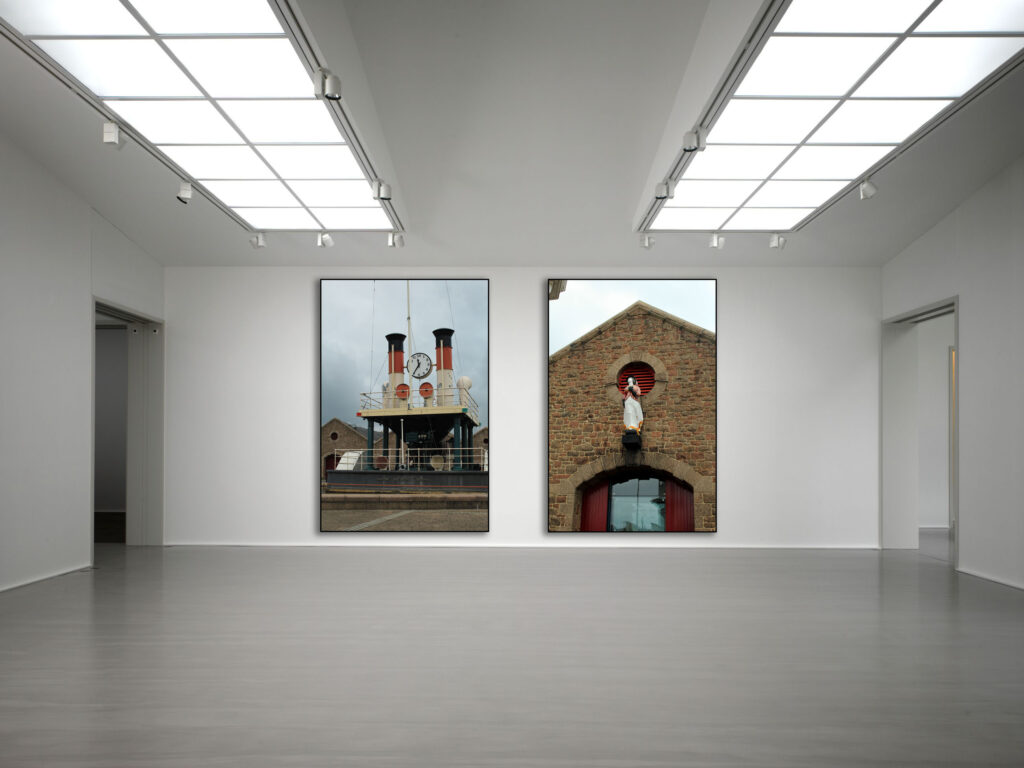Tom Wood
Tom Wood is an Irish photographer, born in 1951, who lived and worked in different places in the UK, mainly in Liverpool. During his days of photography, he has published a multitude of books including Looking for Love, Men / Women, and more. in 1973, Wood started to take photographs with a more serious manner and attitude towards it. Throughout his photography, he has used many different types of cameras, printing types and film types, which leaves a different feel to each of is photographs. He has used old cine film and out of date film stock to take his images causing a grainy quality to the outcomes.
Wood’s photographs all have an old, timey look to them from the period of time they were taken. Many of the photographs by Wood have a lot of colour which pops and draws in your attention because of the usually, darker backgrounds, sometimes caused by the dark time of day or because of the surrounding environment. The photographs that I am focussing on of his, are the ones that capture people, they are mix of candid photographs of people in their natural domain or staged images of people posing in front of the camera. However, his way of photographing these people always seems genuine and raw whether or not they are set up.
Wood has a variety of projects and aims of his photography such as his ‘Looking for Love’ project. The images taken for this are inside of a popular nightclub in darker lights. His photos captured the typical manic nightlife of the drunken customers who were either full of life, partying or half asleep, ready to leave. He was able to capture these images because of the trust he would gain from the people, Wood said, “People were so made up when I went to the trouble to make a print for them that, when you saw them again, they and their friends would accept you”, this is how he would make them comfortable enough to allow him to photograph more often. Another project of his is ‘Men / Women’ in which, he’d take photographs of men and women, separately for the most part, who were working-class. These images consisted of them looking and posing for the camera in their natural scene, however, some images were candids taken without the need for staging.
Andriana Nativio
Andriana Nativio is a photographer born in Cleveland, Ohio, who now lives and works in Phoenix, Arizona. She has done many projects such as, ‘As We Rest in the Shadows’, ‘sleeping bear’ and others. In 2023, she was named one of Lens Culture’s Emerging Talents in Photography and her work has been featured in group exhibitions across the United States.
Nativio’s work is usually in black and white and her images explore femininity, childhood and memory. Her project ‘As We Rest in the Shadows’ consists of photographs of two young girls who are captured having fun, playing and talking, just acting like normal girls. Nativio said about this project, “My photographs meld the sisters’ journey & my memories together in an attempt to return to my girlhood”. This project records the tranquillity of life when you are younger and free. This work has inspired me to dive into the aspect of childhood and to capture and explore images of different parts of it.
Another project by Nativio is ‘Sleeping Bear’, these photographs by her were taking over a month at Sleeping Bear National Lakeshore in Empire, Michigan. These photographs are of many different people, different ages, races, family dynamics. Some of the images are portrait photographs where the subjects are posed in front of the camera, however, some are candid photographs of moments people aren’t expecting to be documented. I think this project is a really good one as it captures many different people who are all at the same place at the same time but with no intention of being so. It is a way to portray the differences between each individual.
Andrew Kung
Andrew Kung is an Asian-American photographer who lives and works in New York City. His images focus on place, identity, and belonging. Kung often uses his own lived-through experiences to produce his images. ‘Through my images, my aim is to normalize Asian American beauty, belonging, and individuality. I often investigate themes of masculinity, family, intimacy, and what it means to be American’ —Andrew Kung
Kung started out photographing for brand such as Nike and Adidas before he decided to start his own series. This was ‘The Mississippi Delta Chinese’, in this project, he documented a small Chinese community. This project was the start of him reclaiming his own Asian identity. He then began to have conversations with his family and friends figuring out it meant to be Asian American to each person, he also read more literature, and watched more movies to learn more about and find comfort in who he is.
The photographs by Andrew Kung that I am focussing on and taking inspiration from, use the natural sunlight to capture the images. This way, his images are all the accurate white balance, keeping the lightening even. Often, the photographs are taken when the sun is setting, using the natural orange/golden glow to highlight certain aspects of the picture. This adds a familiar feel to the photographs and draws in the viewers attention as there is now a hint of brighter colour in the image.
